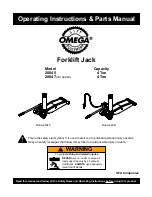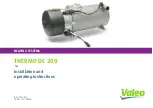
Location
of
the
HRV
for
Mounting
The HRV must be located in a heated space where
the surrounding air temperature does not fall
below 60°F (16°C). The unit must be mounted
level (horizontal) to obtain proper drainage of
water from the heat exchange element and drip
pans. The warranty will be void if these conditions
are not met.
Typically, the HRV is positioned close to an outside
wall or the roof to simplify the connections and keep
the length of insulated ducting required for the
fresh air intake to a minimum.
A minimum clearance of 30 inches (76 cm) in front
of the HRV is recommended to service the heat
exchanger cores and the filters. The HRV may
be mounted on an equipment platform providing
the drain hoses are clear and there is sufficient
space to open the doors for servicing.
Saddle
Installation
Hang
unit
with
suspended
rods
and
"U"
channel
members.
Threaded
rod and U channel
(Supplied by others)
Vibration Isolators
(Supplied by others)
Curb
Mounted
Mount
unit
on
wooden
or
metal
curb
assembly.
Unit
must
be
raised
an
adequate
height
for
installation
and
slope
of
drain
lines.
Curb is wood or
metal (Supplied by
others)
May be anchored to
floor,leaving space
for drain
connections
Vibration Isolators
(Supplied by others)
Flexible
duct
connectors
should
be
installed
between
the
HRV and the galvanized
ductwork.
ATTENTION
18
Operating
the
HRV
without
a
Main
Control
and
Adding
Dry
Contact
Controls
A jumper must be in place between 2 (ON)
and 3 (RED) on the Terminal Block to
activate the HRV for timers and/or dry
contact controls.
Adding Dry Contact Controls
Low Speed
- A jumper between 2 (ON)
and 1 (LOW) initiates low speed ventilation.
High Speed
- A jumper between 2 (ON)
and 6 (HI) initiates high speed ventilation.
Dehumidistat
- A dry contact for a
dehumidistat is connected between 2 (ON)
and 10 (BLK).
The
Terminal
Block
(located on the HRV)
The HRV must have a Jumper in
place between 2 (ON) and 3 (RED)
on the Terminal Block when
installing the unit without a Main
Control.











































